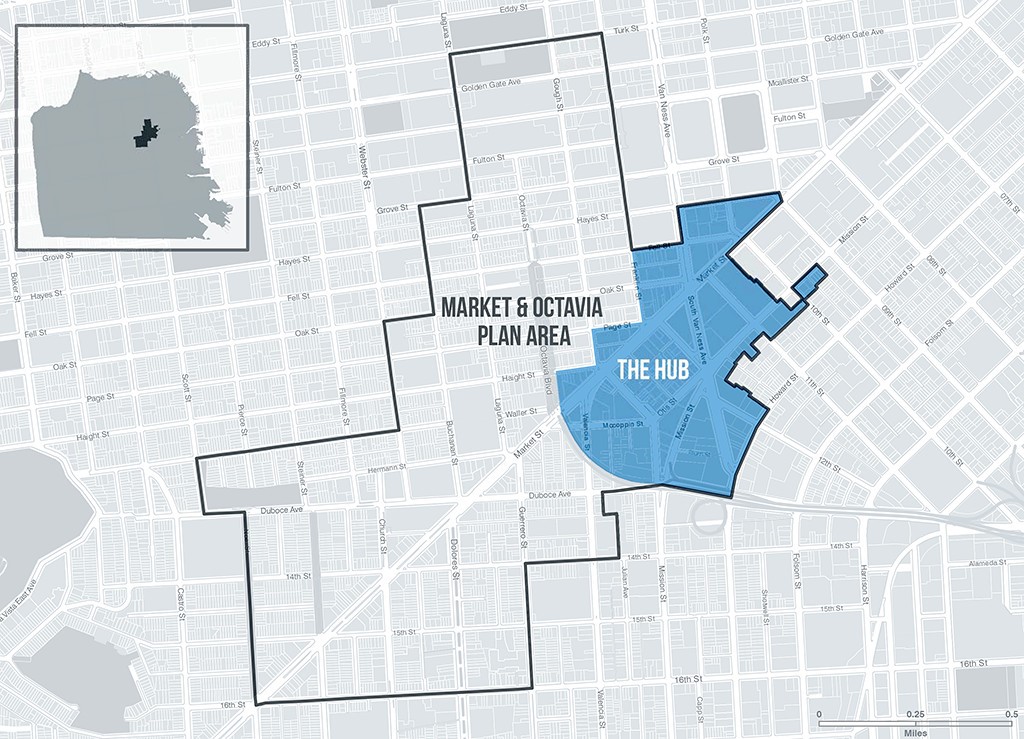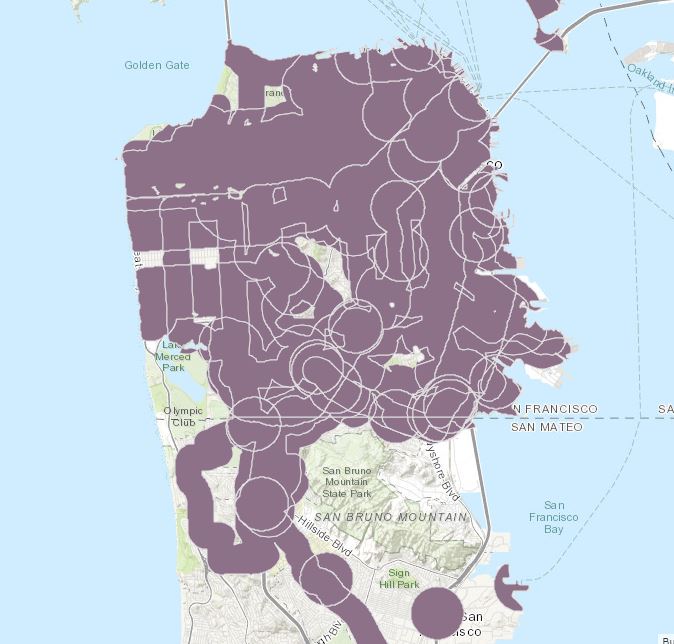The deadline for San Francisco business tenants and property owners to submit either a pre-screening or compliance checklist in accordance with the Accessible Business Entrance Program is fast approaching. This Ordinance (San Francisco Ordinance No. 51-16 – Mandatory Disability Access Improvements), enacted May of 2016, amended the San Francisco Building Code to require any existing building with a public accommodation to either have all primary entries and path of travel into the building accessible by persons with disabilities or to receive from the City a determination of an equivalent facilitation, technical infeasibility or unreasonable hardship.
In response to the Ordinance, the San Francisco Department of Building Inspection (DBI) issued Information Sheet DA-17 which has full details and steps to compliance; however as only approximately 70 properties in these two categories have responded to date, DBI is spearheading an effort to remind Property Owners and Business Tenants to identify which Category they fall into and follow through within the compliance deadlines.
It is important for Property Owners to take note that compliance requires a checklist completed by a Certified Access Specialist (CASp) or California Licensed Design Professional. In this busy development climate, this evaluation should be scheduled several months in advance of the May 2018 deadline. If the site is found to not be in full compliance, the improvements cannot be rolled into an already existing tenant improvement permit. DBI is requiring a separate standalone permit. Perhaps most importantly is to understand that the “path of travel into the building” includes the accessible route from public transportation and parking spaces/facilities. Full compliance with the ordinance requires an evaluation of the sidewalk and curb. Specifically cracks with changes in level > ½”, grates and other openings > ½”, cross slopes greater than 1:48 or slope landings exceeded 8.33% will need to be addressed. These requirements fall under Site Arrival and involve review by the Department of Public Works (DPW). While some exceptions may be granted for historic properties after design evaluation by the Planning Department, the path of travel to the primary entrance will not be exempted. For Business Tenants and Property Owners engaged in lease negotiations, this is especially prescient.
Compliance Responsibility – How and When
Newly constructed buildings with a permit application (Form 1/2) dated on or after January 1, 2002, need only to submit a Pre-Screening Form. This is a bit of a relief for the development community and all those people in new buildings that should all be ADA compliant in any case. What we are seeing is the continued evolution of the difficult situation of trying to balance the needs of the ADA community with the practical realities presented by older buildings.
For all other buildings with public accommodation, the San Francisco Department of Building Inspection requires that the pre-screening form or compliance checklist be completed and submitted by the category deadline. When there are multiple Business Tenants with public accommodation in one building, each Tenant must submit a separate compliance checklist as well as the Property Owner. In some circumstances, a Tenant may qualify for a waiver based on unreasonable hardship while a Property Owner may not.
As generally defined, a place of public accommodation is a business where the public will enter the building to obtain goods, and services, including but not limited to: banks, day care centers, health clubs, hotels, offices, repair shops, restaurants, retail stores, theaters, private schools, etc. If you have questions about your fiduciary responsibilities in relation to an existing lease, please contact our firm’s transactional team. For permit history research to identify existing compliance our permitting division can assist, as well as provide referrals to a CASp Inspector or a licensed design professional to complete and submit the official checklist: Mandatory Disability Access Improvement Program – CATEGORY CHECKLIST COMPLIANCE FORM
Timeline for Compliance
DBI has developed four categories for compliance based on the existing conditions of a primary entrance. Category 1 and 2 properties must submit a Compliance Checklist by May 23, 2018.
Category 1: Properties that are in full compliance with the checklist. Additionally, many owners may be able to document compliance with the following three case examples list within DBI’s DA-17. Our Team can assist with permit history analysis to establish if any of the following apply:
“Case A: All Primary Entries and Accessible Entrance Routes are in compliance with the requirements of the 1998 CBC, and the building or portion thereof was constructed or altered under a permit application filed prior to July 1, 1992.”
“Case B: All Primary Entries and Accessible Entrance Routes are in compliance with the requirements of the 1998 CBC or a later SFBC in effect at the time of any permit application for a Tenant improvement or other alternation, the building or portion thereof was constructed or altered under a permit application filed on or after July 1, 1992, and prior to January 1, 2002, and DBI gave final approval of the accessible entry work under the construction permit or any alternation permits.”
“Case C: All Primary Entries and Accessible Entrance Routes are in compliance with California Historic Building Code (CHBC) in effect at the time of the permit application, the building is eligible to use the CHBC, a permit application was filed on or after January 1, 1995, and DBI gave final approval of the accessible entry work under the construction permit or any alternation permits.”
Category 2: Properties that have no steps but other barriers as identified during the compliance inspection (i.e. non-compliant hardware, lack of maneuvering space, door opening clear width). These properties will have to submit a Building Permit Application by August 23, 2018 for review by DBI, Planning and DPW or request an extension through DBI and the Access Appeals Commission. Our team can work with your design professional or CASp Inspector to finalize many of the additional steps for submittal:
- As with Category 1, DA-17 offers case examples where an analysis of permit history may result in the identification of partial compliance or full compliance with the application of the CHBC.
- Category 2, 3, and 4 buildings must also fill out the Planning Department’s Checklist for Commercial Storefronts for Accessibility. This checklist needs to be approved at the Planning Information Counter and submitted with the Compliance Checklist.
- If the scope of work will include curb or sidewalk improvements then consultation with DPW for the required sidewalk repair and other permits prior to submittal is necessary.
Category 3: Properties that have one step with other barriers. Checklists for this category must be on file by May 23, 2019.
Category 4: Properties with two or more steps and other barriers. Checklists for this category must be on file by November 23, 2019.
EXEMPTIONS:
Technical Infeasibility, Unreasonable Hardship, Alternate Methods
Once a site has been evaluated and the Tenant or Property Owner can prove that the necessary barrier removal is infeasible or unreasonable, the Ordinance requires the owners provide an alternate method of ensuring that persons with disabilities can access the goods and services offered. Technical infeasibilities may be approved through DBI; Unreasonable hardship may also be approved by DBI but must also be ratified by the Access Appeals Commission.
For more information on how your property or business is affected by this ordinance, do not hesitate to contact Gillian Allen gallen@reubenlaw.com
Authored by Reuben, Junius & Rose, LLP Permit Consulting Manager, Gillian Allen
The issues discussed in this update are not intended to be legal advice and no attorney-client relationship is established with the recipient. Readers should consult with legal counsel before relying on any of the information contained herein. Reuben, Junius & Rose, LLP is a full-service real estate law firm. We specialize in land use, development, and entitlement law. We also provide a wide range of transactional services, including leasing, acquisitions and sales, formation of limited liability companies and other entities, lending/workout assistance, subdivision, and condominium work.











